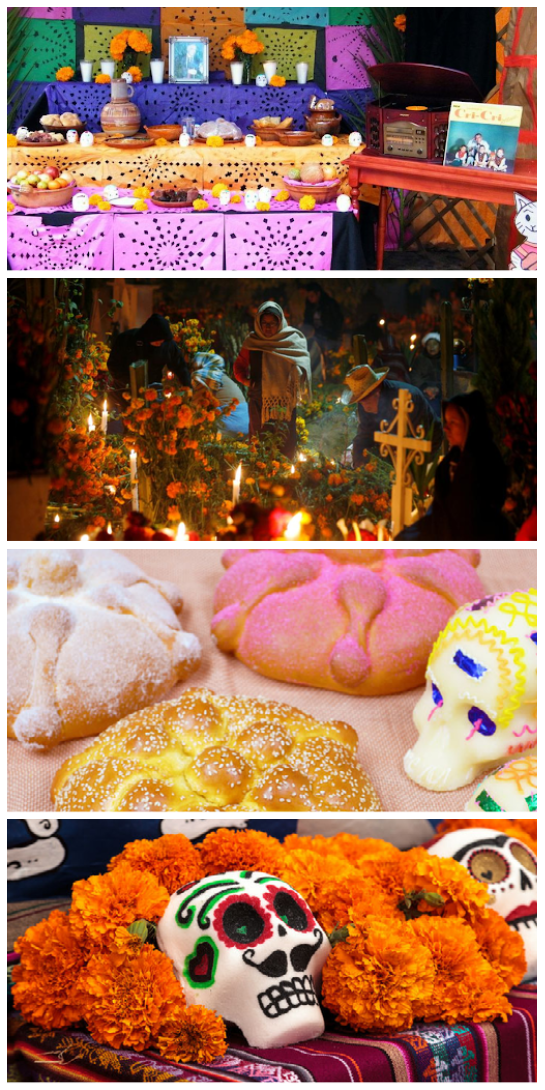10.29.2020 – Maria on el día de los muertos
10.29.2020 - Maria on el día de los muertos

From Oct. 31st to Nov. 2nd every year, el día de los muertos is celebrated. This is a celebration that is traced back to the Aztecs and Mayas. Over 3,000 years, ago this celebration was in honor of Mictecacihuatl “lady of the dead.” After the Spanish conquest, this indigenous tradition was combined with the Catholic celebrations of All Saint’s Day and All Souls’ day. Together both traditions became what today is known as el día de los muertos. Even though this tradition originated in Mexico, over the years it has been continued in the US and other countries in Latin America.
Planning for el día de los muertos can begin up to a month before. The biggest preparation that takes place is the making of el altar. It all begins by choosing a special place where the altar will be set up. The altar can be as big or small as a family chooses. After choosing a location, the main piece needed is a table. To add height and levels you can use cardboard boxes or baskets, stacked on top of each other. Once the table is set with as many levels as wanted, it is covered with a table cloth or piece of fabric, to create a plain canvas. Now the decorating begins,this is what is known as las ofrendas or the offerings for the spirits. The altar can be in honor of a single deceased family member or in honor of all family members that have passed. To decorate the altar you need a picture or pictures of deceased family members, candles, water, cempasuchil flowers (Mexican marigolds), and any items that the person loved along with their favorite foods.
Candles
Candles are meant to light up the altar and welcome the spirits back to the living world.
Water
Water has different meanings. The main reason is to help refresh the souls during their journey. It is also meant to symbolize the purity of the souls.
Cempasuchil
The altar can be decorated with real or paper flowers. Cempasuchil is a flower traditionally used for its bright orange color and strong scent. Both the bright colors and potent scents are said to help guide the spirits back to the living word.
Food
Pan de muerto (Bread of the dead) is traditionally a round loaf of bread with sugar paste symbols. The bones are said to represent the deceased that is being remembered, and the symbol of tears is said to be the crying of the goddess Chimalmas for the living.
Mole is one of the most popular foods seen on altars. It doesn’t have a spiritual meaning aside from it being one the most traditional Mexican dishes, and it being a symbol of the mixing of indigenous and Spanish people (mestizaje).
For those who are able to visit the tombs of their loved ones the celebration begins on Oct. 31st. This day is dedicated to the souls of the children that have passed. On this day the tomb of the child is decorated, the decorations for the most part are small. They include small flowers, toys, small pan de muertos, candles and their favorite food or candy. In the days to follow the celebration expands to all the other sourls. The tombs are decorated with flowers, candles, food, and pictures. El día de los muertos is a celebration, those that can will stay in the cemetery the night of Nov. 1st, as if once again having dinner with their deceased family members.
The celebration of el día de los muertos varies depending on the place a person lives. Some go all out and have parties and some just have small family gatherings. Locally in many of or Latino/Hispanic communities a mass is held in honor of the spirits. Celebrations are held as a community by building communal altars or more intimately in homes. Whichever tradition is followed it has the same purpose, to remember all the loved ones that have passed and ensure that they are remembered throughout generations.
-Maria